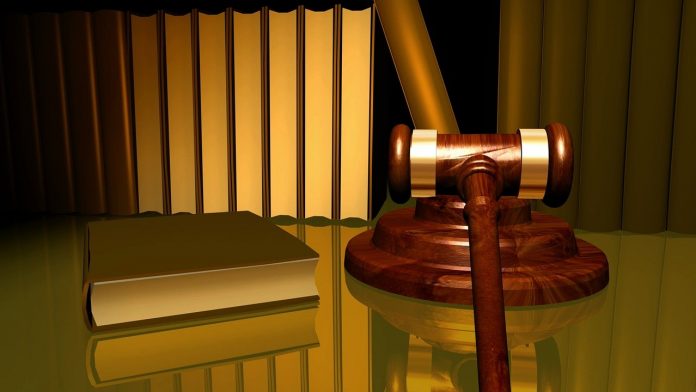This article has been written by Sneha Mahawar pursuing BBA LLB from Ramaiah Institute of Legal Studies. This article discusses the doctrine of stare decisis which refers to the rule in which the courts would follow previous judicial decisions usually made by higher courts, thus, acting as a precedent for future instances.
Table of Contents
Introduction
The court’s policy of adhering to precedents is known as stare decisis. It simply means “to stand by the decided matters” i.e., stick to a decision. ‘Stare decisis’ is an acronym of the Latin phrase ‘stare decisis et non quieta movere” ’which means “to stand by decisions and not to disturb the already settled matters.” Thus, it means to stick to one conclusion and not disrupt settled things. The legal principle of stare decisis requires courts to follow and respect precedents established by the court of higher authority.
The principle and concept of stare decisis is enshrined in the Latin maxim ‘stare decisis et non quieta movere’ and is embodied in Article 141 of the Constitution of India, 1949. It states that the law declared by the Supreme Court shall be binding on all courts within the territory of India. The words ‘binding’ and ‘on all courts’ strike our attention. It must be resolved what is binding must be decided, as well as whether the Supreme Court is bound by its own rulings.
Stare decisis et non quieta movere : legal maxim
The notion of stare decisis is essentially a rule that a court must observe and abide by the rules set down by a higher court. In the legal context, judges interpret the meaning of law so that the already settled issues should not be disturbed in order to maintain continuity. If various judges issued different opinions in different courts on the same facts, there would be chaos, and many parties would feel as if they are powerless, unjustifiably treated and their rights have been infringed.
The doctrine of stare decisis refers to the rule in which the court would follow previous judicial decisions in future instances. As a result, when the same questions or arguments are addressed in later instances, the court will follow the findings of previous cases. The phrase ‘the doctrine of precedent,’ according to Salmond, has two interpretations. In a broad sense, precedents are reported, may be cited, and are likely to be followed by courts. In a literal sense, it indicates that a precedent not only carries a lot of weight but that in certain instances, courts are obliged by past decisions. As a result, all a court truly does is apply precedents or rulings laid down in the past.
Courts are arranged in a hierarchy. The Supreme Court is the pinnacle of the legal system. It renders final decisions in cases. The decision is a source of authority for whatever it determines. The ratio is what matters in a decision, not every observation contained within, or what logically emerges from the different observations stated in the judgment. The statement of the reason or principle on which a court has resolved a case is sufficient to establish a precedent. The word ‘law declared’ is the one that is legally binding. A conclusion that is not expressed, not based on reasoning, and not based on a thorough examination of the problem cannot be considered ‘law declared.’
Concept of stare decisis
Henry Melvin Hart and Albert M. Sacks were American legal scholars who were regarded as influential members of the Harvard Law School faculty. They also proposed approaches to the most remarkable and important American law cases. According to them, the doctrine of stare decisis advances three basic aims.
To begin with, the concept of the doctrine instils faith along with confidence in citizens’ ability to arrange their economic and social interactions. It accomplishes this aim by assuring them that they are in conformity with the law. It also stimulates and promotes the private conflict resolution method since the court might derive a conclusion based on this doctrine.
Second, it eliminates the necessity for retrials in circumstances when a decision has already been reached. The doctrine of stare decisis promotes fair and efficient adjudication by avoiding the necessity for litigants to re-argue and judges to rethink every issue in every case, and it prevents a rush of litigation whenever the bench changes.
Finally, it increases public trust in the judiciary system by limiting and reducing the power of judges. The doctrine aids judges in making predictable and non-chaotic decisions.
Foundation of the doctrine of stare decisis in India
The theory of stare decisis is based on the principle of maintaining consistency and certainty. The judicial system requires a high level of predictability, stability, and certainty. Precedent appeals to the core want in a legal system that is based on reasonable, regular, and stable expectations. It meets the requirement that all other things being equal, a legal system should settle a dispute in a comparable manner, regardless of the various courts. It discourages re-litigation of problems that have previously been decided authoritatively.
The notion of stare decisis, in its current form, does not appear to have existed in India prior to the arrival of the British. Following the foundation of British authority in India, the notion of binding precedent became relevant in India. The notion of stare decisis is predicated on the two preconditions which are the hierarchy of courts and the reporting of judgments.
The judgment of the Exchequer courts was granted binding power for the first time in England in the 17th century. After the British conquest of India, the notion of precedent was developed in India, which led to a hierarchy of courts and the concept of a higher court’s judgment being regarded as a binding decision on subordinate courts. As a result, stare decisis has been a characteristic feature of our legal system since the 18th century.
The idea of stare decisis was not widely employed at first owing to a lack of written records of decisions or judgments in cases, but once the notion of keeping a record of the verdict was introduced, the wide usage of the doctrine was witnessed.
Article 141 of the Indian Constitution
The Latin maxim ‘stare decisis et not quieta movere’ enshrines the idea and concept of stare decisis, which is codified in Article 141 of the Indian Constitution of 1949. Article 141 states that any legislation pronounced by the Supreme Court is binding on all courts within the territory of India. It further states that only a case’s ratio decidendi, not the obiter dictum or the mere facts of the case, has binding force. As a result, in order for other courts to implement the Supreme Court’s ruling, they must first comprehend the correct concept and principle established in the preceding case.
Article 141 highlights certain important concepts:
- All the Indian courts are required and bound by law to follow the Supreme Court’s ruling and maintain the concept and principle constant;
- The judgment must be read in its entirety, with the remarks from the judgment being assessed in light of the issues before the court;
- Only if a judgment is based on determining or resolving a legal matter may it be used as a precedent;
- When a court is divided in determining a matter, the result reached by the judges in the majority will be cited as a precedent, rather than the one reached by the judges in minority;
- Supreme Court’s ex-parte rulings are also legally binding and can be used as precedents;
- The decision of the Supreme Court does not bind it;
- The binding character of a judgment is not affected by procedural irregularities or immateriality;
- Special leave petitions are legally binding.
Treatment of precedents by higher courts
A higher court can do the following in a case or matter that was previously determined by a lower court:
Reverse
A higher court can reverse the decision laid down by a lower court. The initial decision will no longer be valid and have any effect.
Overrule
When a higher court determines in a subsequent case that the ruling in the first case delivered by a lower court was incorrect, it overrules the lower court’s ruling.
Distinguish
A higher court distinguishes the matter of a lower court when the material circumstances of the case are different and the principles determined in the previous case are too limited to be applied effectively to the new facts.
In the usual order of things, courts follow the concept and doctrine of stare decisis but higher courts have the power to overturn rulings that are erroneous or do not stand up in light of new circumstances. When a decision is recent or when there is a split of opinion, the court may overrule it. It can also overturn a judgment if it is confusing, ambiguous, or causes undue hardship, or if the error in the preceding judgment cannot be effectively corrected through the legislative process. A judgment that has been overturned is no longer a binding precedent. The re-opening of previous conflicts on the basis of a change in the legal position may occur if an earlier case’s verdict is overruled.
Following a precedent refers to doing something that has already been done. As a result, the first stage in evaluating a precedent is to assess the resemblance and, if there is any, the size or degree of similarity between the facts. Thereafter, the next step is to examine whether the same approach has been used before as a precedent and has addressed the problem.
Merits of the doctrine of stare decisis
- It saves time and prevents needless lawsuits.
- The legislation is developing in a systematic manner.
- The most significant benefit was that it increased legal clarity and uniformity. A competent decision-making body must be consistent in its decisions and prevent arbitrariness in its decisions.
- It removes the element of uncertainty and allows inferior courts to adopt the higher court’s ruling unanimously and without dissent.
- The presence of precedent reduces the chances of a judge making an error while assessing the principle in question.
Demerits of the doctrine of stare decisis
- Practical law is founded on experience, taking precedent into account reduces the scope of experience, which detracts from the core of practising law;
- It has been chastised for impeding the free evolution of law;
- The doctrine’s and precedent system’s most serious flaws is its rigidity and unwillingness to allow change;
- Another downside is that it is complicated, which makes the situation more unpredictable at times.
- Many times, judicial rulings that are perceived to be errors are upheld as precedent law.
Case law
Hari Singh v. State of Haryana (1993)
In this case, it was held that one of the key concepts to be kept in mind in the system of justice administered by courts is that the courts of co-ordinate jurisdiction should have consistent opinions in respect to similar sets of facts and circumstances or questions of law. Instead of establishing judicial concord, if opinions offered on identical facts are discordant, judicial anarchy will result. The view that has dominated the field for a long period must not be shaken simply because another opinion exists. As a result, the notion of stare decisis was upheld.
Illustrations
- The Supreme Court has ruled on the mechanism for selecting candidates for an examination. In a lower court, a man named Amar challenges the selection method for another exam. Will the Supreme Court’s ruling be binding on the subordinate courts?
The notion of stare decisis requires the lower court to follow the precedent. If the circumstances of the case are comparable, it must also be decided in accordance with the previous case. However, because the examination that the Supreme Court decided on is not the same as the one that Amar is contesting in the lower court, the lower court might make a different ruling.
- While Red is on vacation, Blue borrows Red’s lawnmower. Blue does not seek Red’s consent. Blue destroys Red’s lawnmower by mistake, but he doesn’t inform Red. He merely restores the lawnmower to Red’s garage. When Red gets home and sees his lawnmower is broken, he insists that Blue purchase him a new one. The two end up in court, where the judge rules that Blue owes Red the money he needs to fix his lawnmower, but that Blue is not obligated to purchase Red a new lawnmower.
This is a precedent-setting judgment. Lower courts in the same jurisdiction should now apply this new rule: If a borrower breaks a borrowee’s thing and was using the borrowee’s item without authorization in the first place, the borrower must pay to have the item repaired. Because the notion of stare decisis requires it, lower courts will adopt this new precedent.
Ratio decidendi
Ratio decidendi is a Latin term that means ‘reason for decision’ or ‘rationale for decision.’ The Ratio decidendi is the point in a case where the judgment or principle established by the case is determined. The Latin phrase Ratio decidendi directly translates to “cause for deciding.”
It is the justification given for reaching a judgment in a matter in the judicial context. Such a reason is not the legislation that is attracting attention in the current case, but rather a vital concept that aids the court in reaching a certain conclusion. This element of the precedent, not the general observations of the court, must be adopted by the courts in subsequent decisions.
The rationale provided by the ruling is the subject of a legal dispute rather than a factual disagreement. Because the circumstances cannot be the same in other instances, the judge’s observations relevant to the facts cannot be binding in other situations, even if comparable laws apply. However, the reasons for reaching a judgment are binding. If there are several grounds for making a certain decision, all of them will be binding in later situations.
Commissioner of Income Tax v. M/s Sun Engineering Works Private Limited (1992)
In this case, the Supreme Court held that in applying the decision to subsequent cases, the court must carefully try to ascertain the true principle established by the Supreme Court decision, rather than cherry-picking words or sentences from the judgment that are divorced from the context of the question under consideration by the court to support their reasoning. The judgment would not be binding if it did not specify a justification for determining a point, because the reason for the decision is what is binding.
State of Orissa and Others v. Mohd. Hiyas (2006)
In this case, it was held that the substance of a decision is its ratio decidendi, rather than every observation contained in the judgment. The statement or the reason or principle on which a court has resolved a case is sufficient to establish a precedent.
Obiter dictum
Obiter dictum is a Latin word that means “said in passing or other things mentioned,” referring to a fleeting comment in a decision. It is an English common law notion in which a decision is made up of only two parts: ratio decidendi and obiter dictum. In the judicial context, ratio decidendi is binding in terms of court precedent, whereas, obiter dictum is simply persuasive. However, the Supreme Court’s obiter dicta, on the other hand, are binding on all Indian courts and tribunals.
Obiter dicta are non-essential statements that allude to hypothetical facts or unrelated legal matters. Obiter dictum refers to a judge’s words or views that, while contained in the body of the case law, are not required to be stated in the judgment. Obiter dicta, unlike ratio decidendi, are not the subject of a judicial judgment, even if they are true statements of law.
To assess if a judicial remark is a ratio or obiter, the Wambaugh Inversion Test states that one shall invert the argument, or ask whether the result would have been different if the statement had been deleted. If this is the case, the statement is important and ratio; if it is not, it is obiter.
Conclusion
We can conclude by saying that stare decisis means “the rule of precedent.” When a court has previously reviewed a legal problem and made a decision, it is referred to as precedent. A higher court’s decision is binding on the lower court and serves as a precedent for the lower court’s decision, which cannot be twisted by the lower court. This idea is known as stare decisis, which translates to “stand by what has been declared.” It is commonly known as the notion of precedent in India. Justice Cardozo says, “in a system so highly developed as our own, precedents have so covered the ground that they fix the point of departure from which the labour of the judge begins. Almost invariably, his first step is to examine and compare them. If they are plain and to the point, there may be a need for nothing more. Stare decisis is at least the everyday working rule of our law”.
References
- https://blog.ipleaders.in/judicial-precedent-source-law/#:~:text=Stare%20decisis%20is%20the%20legal,basis%20of%20this%20legal%20principle.
- https://www.lawctopus.com/academike/stare-decisis/
- http://ijtr.nic.in/webjournal/8.htm
- https://www.toppr.com/guides/legal-aptitude/jurisprudence/sources-of-law-concept-of-stare-decisis/
- https://repository.law.umich.edu/cgi/viewcontent.cgi?article=1095&context=mlr
- https://www.lawctopus.com/academike/precedents-as-a-source-of-law/#:~:text=Binding%20precedents&text=Binding%20precedent%20relies%20on%20the,to%20new%20situations%20by%20analogy.
- https://study.com/academy/lesson/stare-decisis-doctrine-definition-example-cases.html
- https://www.advocateshah.com/blog/what-is-stare-decisis-with-doctrine-of-stare-decisis/
- https://taxguru.in/goods-and-service-tax/legal-term-ratio-decidendi-obiter-dictare-judicata-stare-decisis.html
- http://www.smmpalwal.com/SILR_PALWAL/pdf/4thsem/llb6/Rule%20of%20Stare%20decisis-converted.pdf
Students of Lawsikho courses regularly produce writing assignments and work on practical exercises as a part of their coursework and develop themselves in real-life practical skills.
LawSikho has created a telegram group for exchanging legal knowledge, referrals, and various opportunities. You can click on this link and join:
Follow us on Instagram and subscribe to our YouTube channel for more amazing legal content.
 Serato DJ Crack 2025Serato DJ PRO Crack
Serato DJ Crack 2025Serato DJ PRO Crack











 Allow notifications
Allow notifications



